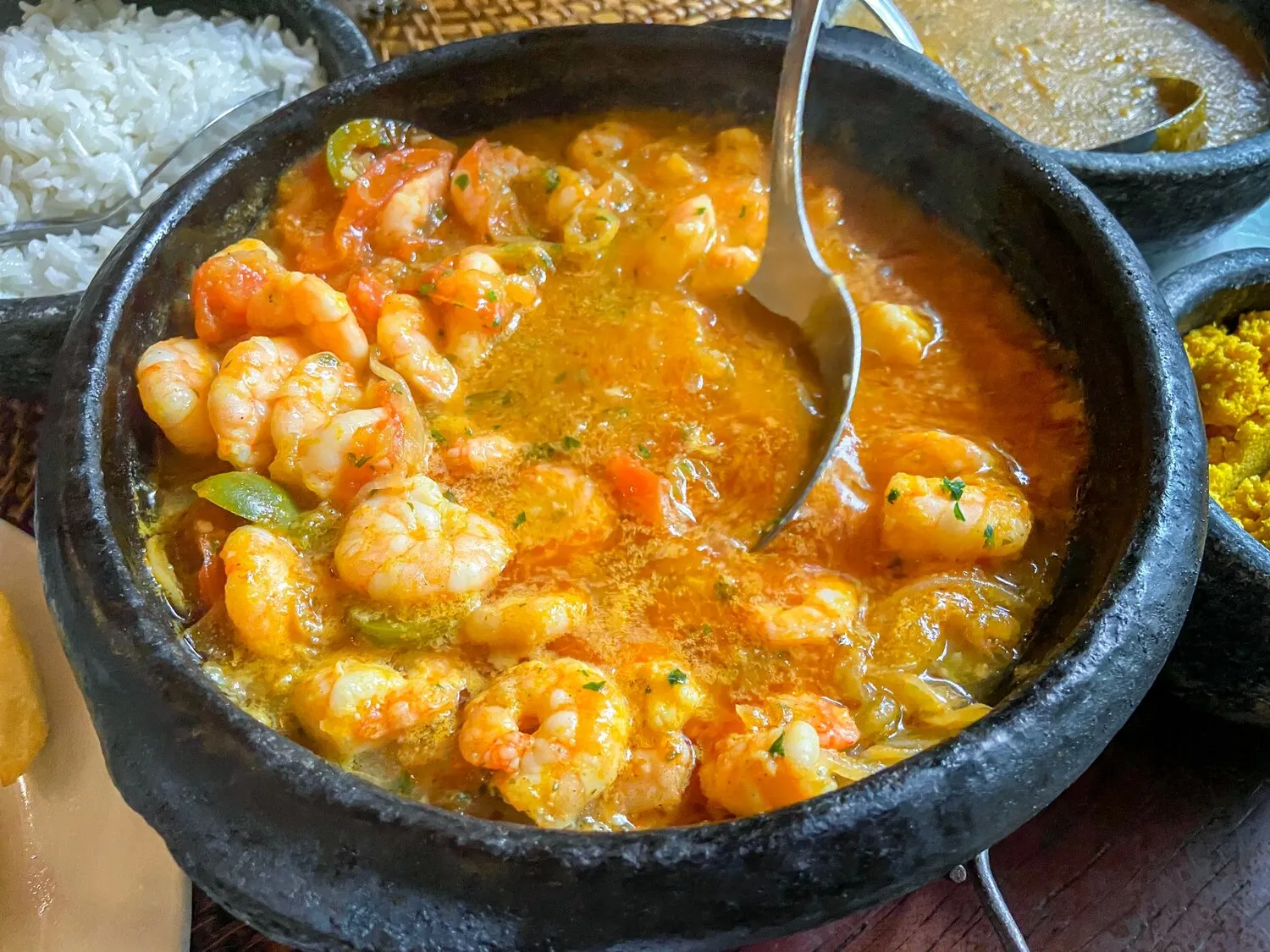
Moqueca
Traditional Brazilian seafood stew, often made with fish, shrimp, coconut milk, tomatoes, onions, and cilantro, simmered in a clay pot.
Nutrition Facts
* The % Daily Value (DV) tells you how much a nutrient in a serving of food contributes to a daily diet. 2,000 calories a day is used for general nutrition advice.
BZ Búzios Brasil
Moqueca's origins trace back to Indigenous cooking techniques, specifically from the coastal tribes of Bahia and Espírito Santo. Over time, it was influenced by African and Portuguese cuisines, resulting in the dish we know today. African ingredients like palm oil (dendê) and coconut milk were incorporated, while Portuguese traders introduced tomatoes, onions, and peppers.
Moqueca is more than just a dish; it's a symbol of Brazilian coastal culture, particularly in Bahia and Espírito Santo. It represents the fusion of Indigenous, African, and Portuguese influences and is often enjoyed during celebrations and gatherings.
Regional Variations
Two main types of Moqueca exist: Moqueca Baiana and Moqueca Capixaba. Moqueca Baiana, from Bahia, incorporates dendê oil (palm oil) and coconut milk, giving it a richer, more intense flavor and a distinctive orange hue. Moqueca Capixaba, from Espírito Santo, omits dendê oil and often coconut milk, resulting in a lighter, more delicate flavor.
Communal Dining
Moqueca is often served in a clay pot directly at the table, encouraging communal dining. Sharing the dish from the same pot symbolizes unity and togetherness.
Celebratory Dish
Moqueca is a popular dish for special occasions, such as family gatherings, religious festivals, and beach parties. It signifies abundance and celebration.
Moqueca is a flavorful seafood stew characterized by its rich, savory, and slightly sweet taste. The combination of fresh seafood, aromatic vegetables, and coconut milk creates a harmonious and satisfying culinary experience.
The dominant flavor profile is built upon the sweetness of the seafood, typically white fish, shrimp, or a combination of both. This sweetness is balanced by the acidity of tomatoes and lime juice, the mild pungency of onions and garlic, and the fruity, almost floral notes of bell peppers. Coconut milk adds a creamy richness and subtle sweetness, while dendê oil (palm oil) contributes a unique earthy flavor and vibrant orange color, particularly in Moqueca Baiana. Coriander provides a fresh, herbaceous note.
Freshness is Key
Use the freshest seafood available. The quality of the seafood significantly impacts the flavor of the dish.
Gentle Cooking
Avoid overcooking the seafood. Gently simmer the stew to preserve the tenderness of the fish and shrimp.
Flavor Layers
Build the flavors gradually. Sauté the vegetables before adding the seafood and liquids to allow the flavors to meld.
Use a Clay Pot (Optional)
Cooking Moqueca in a traditional clay pot enhances the flavor and adds to the authentic experience, but is not essential.
Adjust the Heat
Control the heat level according to your preference. Add chili peppers or hot sauce for a spicier Moqueca.
Explore additional Seafood Stew dishes and restaurants
Explore Seafood StewDiscover top dining spots and culinary experiences in Búzios.
Explore BúziosLearn more about the food culture, restaurant scene, and culinary heritage of Brazil.
Explore Brazil